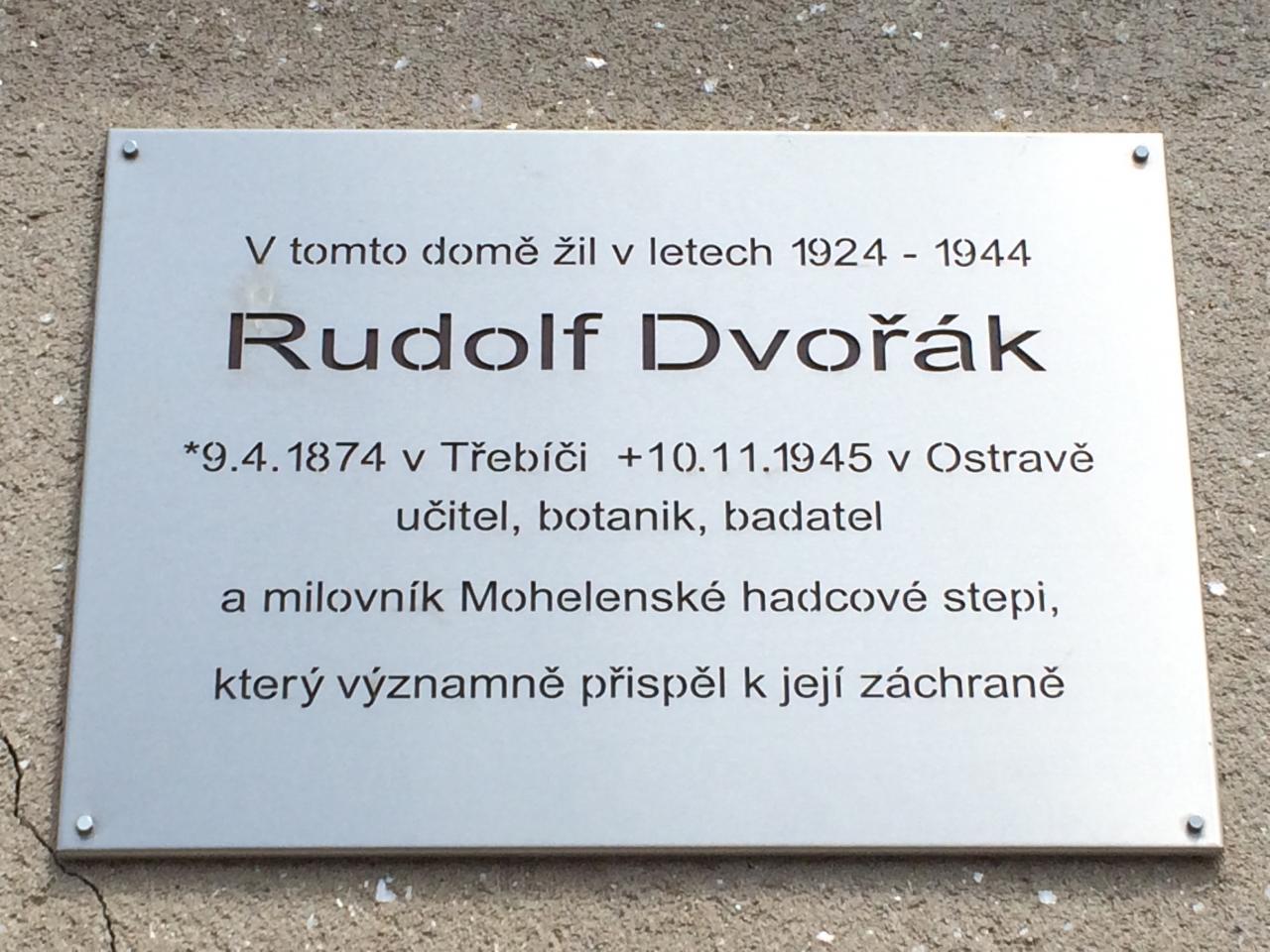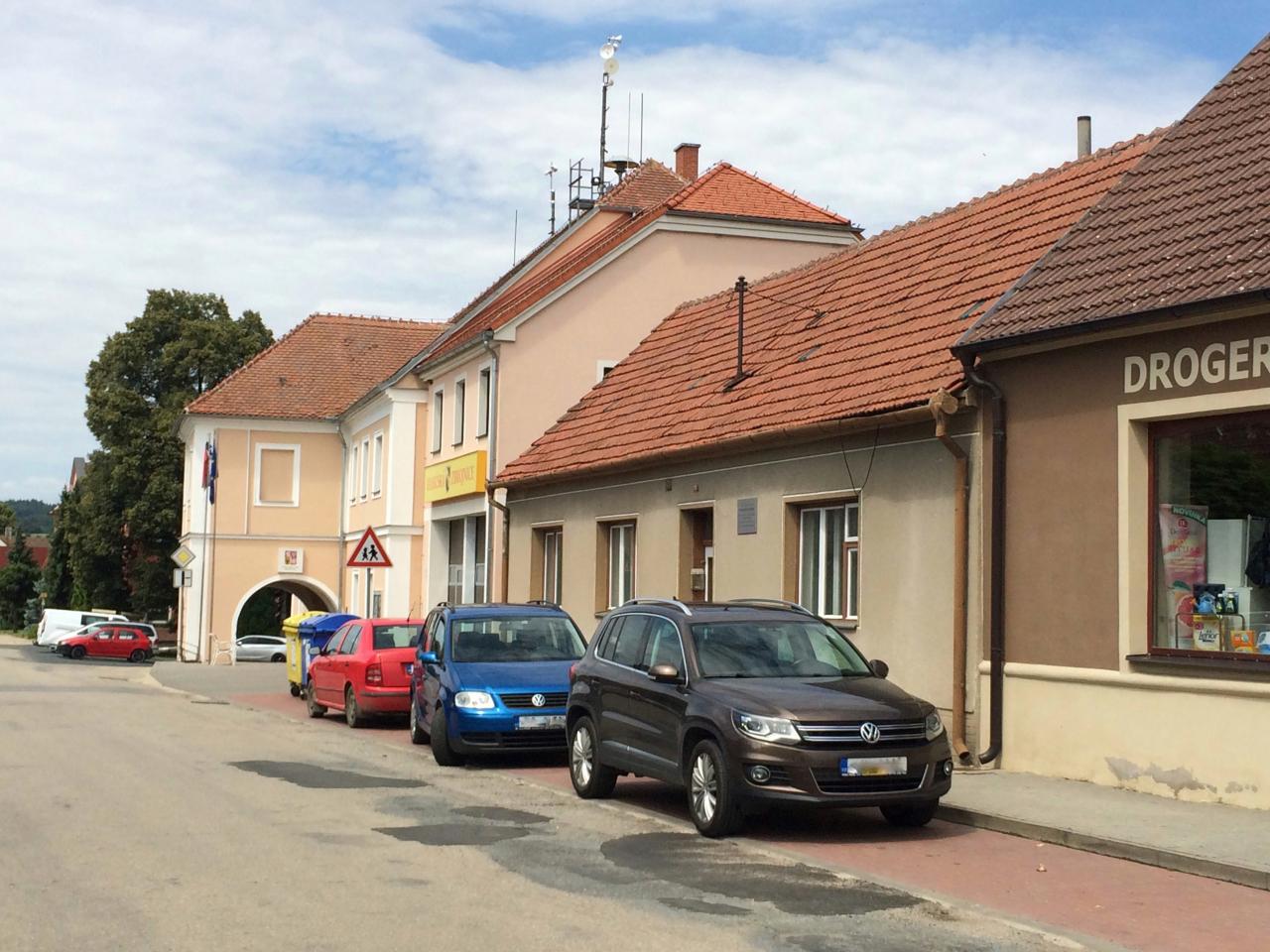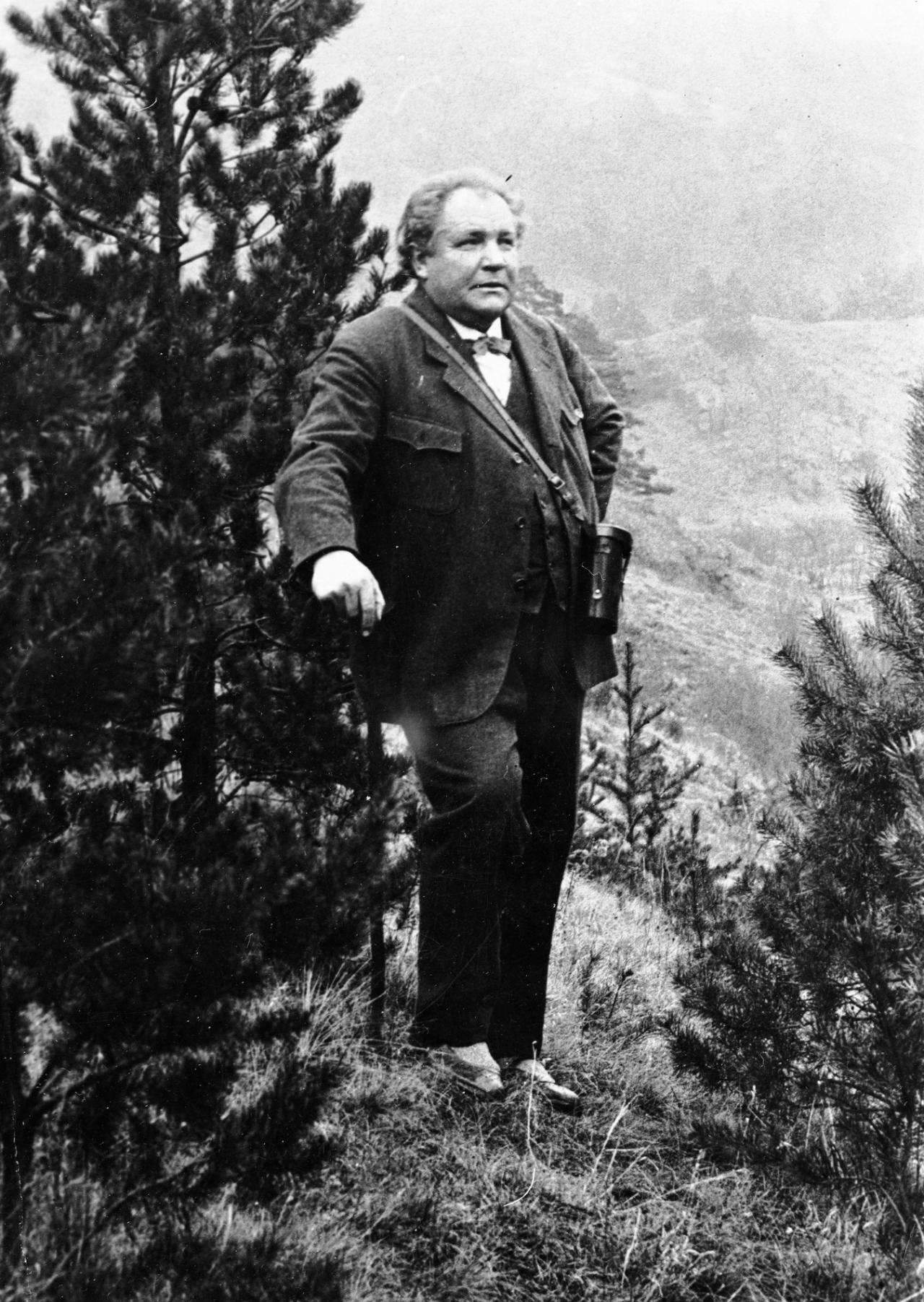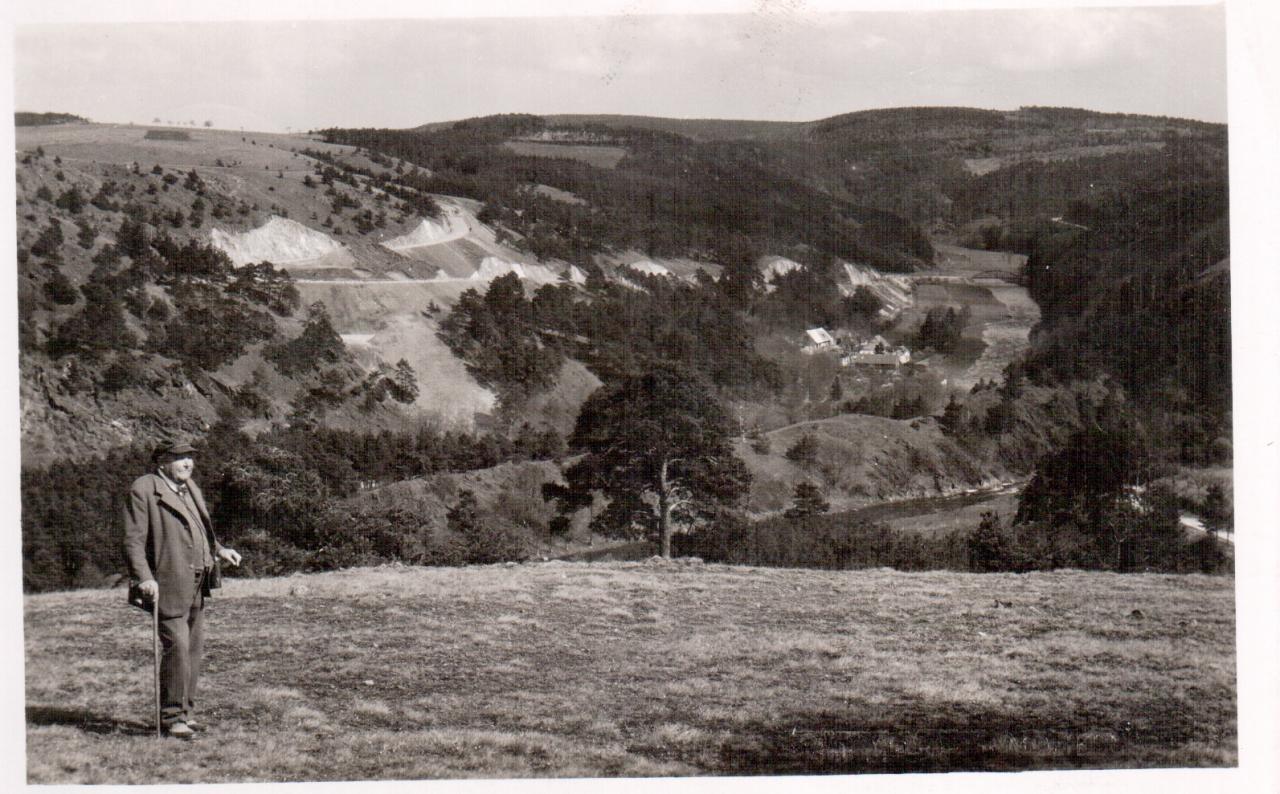Commemorative Plaque to Rudolf Dvořák in Mohelno
Dating: 2018
Annotation:
The memorial plaque to Rudolf Dvořák (1874–1945) commemorates the place where this important botanist, entomologist and mycologist worked. His scientific work focused chiefly on algology (the study of algae and sea-weed) and later on the extensive research of the Mohelno Notholaena marantae steppe. Together with other naturalists he initiated the establishment of a nature reserve covering this area in 1933.
Description:
Rudolf Dvořák was born in Třebíč, he went to grammar school here and when he graduated from pedagogy school in Brno, he taught in several schools in his home region. From 1924 he lived in Mohelno where he taught at secondary school. He stopped teaching altogether in 1928 and focused uniquely on his scientific work. Thanks to his detailed knowledge and the numerous excursions to the nearby and wider surroundings, Dvořák was able to create an extensive collection of butterflies, beetles, plants, rocks and minerals.
Dvořák`s early scientific work was in the field of algology and he continued his detailed research of the algae of the central Pojihlaví even after moving to Mohelno. Over time though, his interest turned to a locality of pan-European importance: the Notholaena marantae steppe above the Jihlava river. Rudolf Dvořák instigated a complex research here which has inspired the scientific work of many other experts – zoologists, mycologists, algologists and lichenologists. He himself focused chiefly on nanism, or dwarf forms of plants, on which he published scientific papers from 1927. His most important work Nanisms, the most detailed work on dwarf plant forms of the Mohelno area, was published in 1935. In this work Dvořák did not focus on morphological variability alone, he also studied the ecological and physiological factors. He counted 279 types of nanism in the Mohelno steppe, the most prominent being Papaver argemone poppy, Campanula rotundifolia bluebell, Consolida regalis larkspur, Miosotis stricta forget-me-not or Veronica spicata speedwell. During his work in the Mohelno steppe Dvořák also discovered several species of fungi and published papers on them. Together with the renowned professor of botany Josef Velenovský he described a new genre of steppe fungi (Galeropsis).
In 1929 Dvořák became corresponding member of the Natural Science Club in Brno and in 1930 a full member of the Moravian Society for Natural Science. It is an interesting fact, that Rudolf Dvořák opened a natural sciences museum in his flat in Mohelno in the 1930s. Here he exhibited not only his herbaria, the abovementioned collections of beetles, butterflies, minerals and archaeological exhibits, but also his remarkable collection of more than 300 pieces of vltavines.
The commemorative plaque of Rudolf Dvořák was unveiled in Mohelno on 10 August 2018 at the initiative of the local museum. It was a sponsor gift of the Mohelno company LiMiD s.r.o. and the author of the text on it is Pavel Veselý from Mendel University in Brno.
Connected places:
-
Keywords: botany; entomology; mineralogy; Mohelno; Notholaena marantae steppe; nanism; dwarf plant forms; natural sciences museum
References:
Janko, J.: Dvořák Rudolf (9.4.1874–10.11.1945). In: Vošahlíková, P. a kol.: Biografický slovník českých zemí, 15/2012, s. 490–491.
Janko, J.: Vědy o životě v českých zemích 1750–1950. Praha 1997.
Macků, J.: Mohelenská hadcová step. In: Živa, 2/1960, s. 42–45.
Suza, J.: K šedesátinám Rudolfa Dvořáka, učitele a botanika v Mohelně. Zvláštní otisk ze Sborníku přírodovědeckého klubu v Brně, roč. XVI. Brno 1933.
Author's initials: LeO
Photos:

(Author: )

(Author: )

(Author: )

(Author: )


